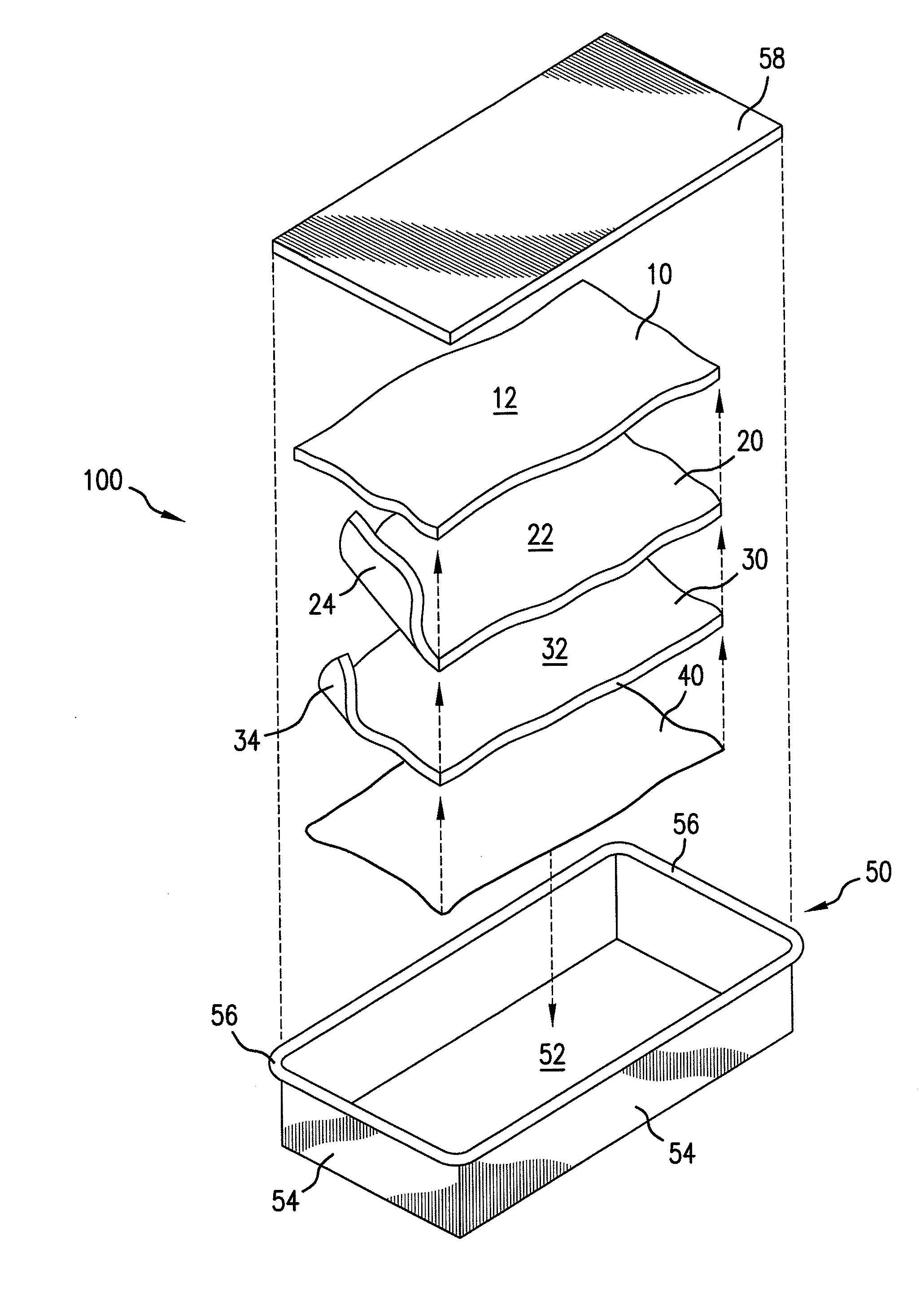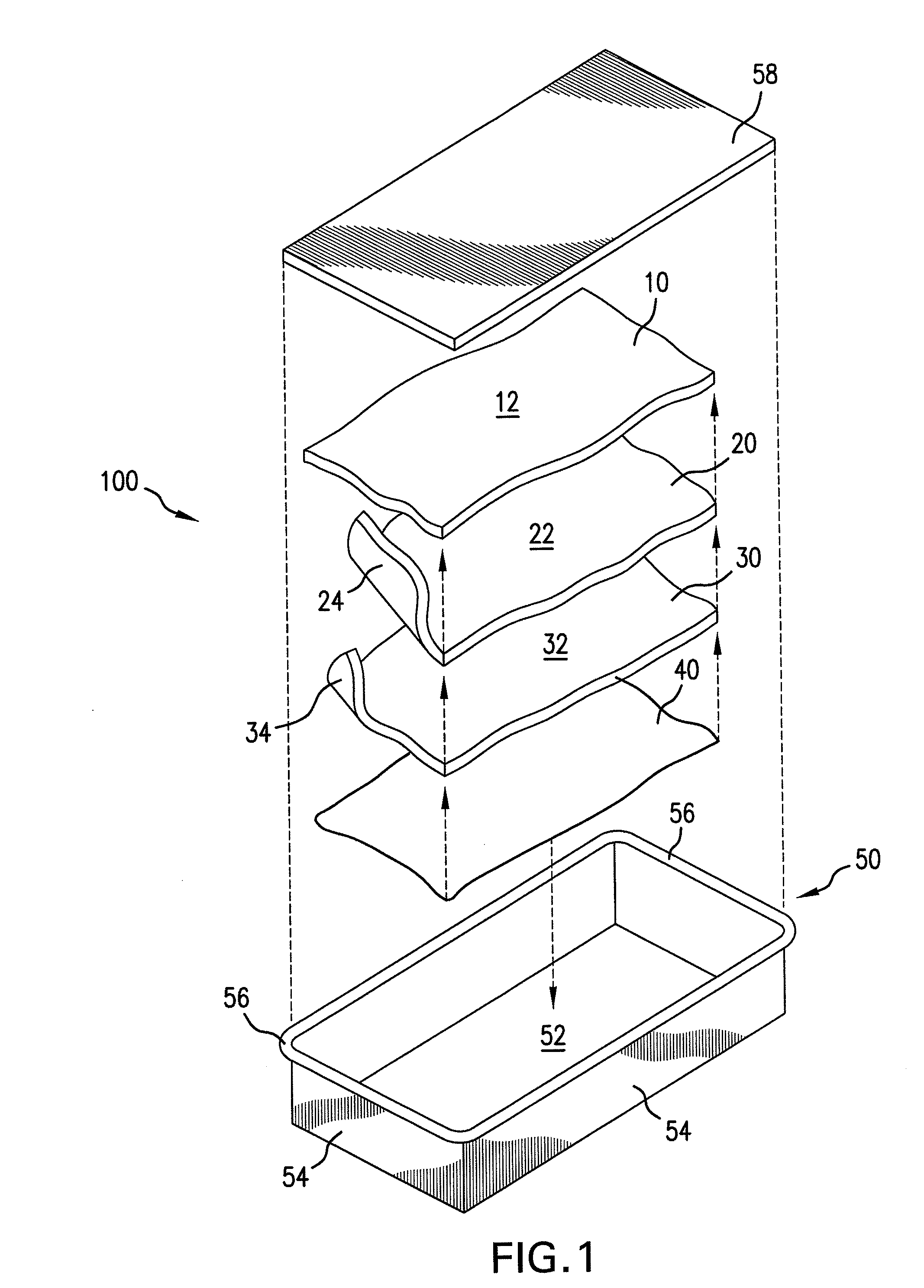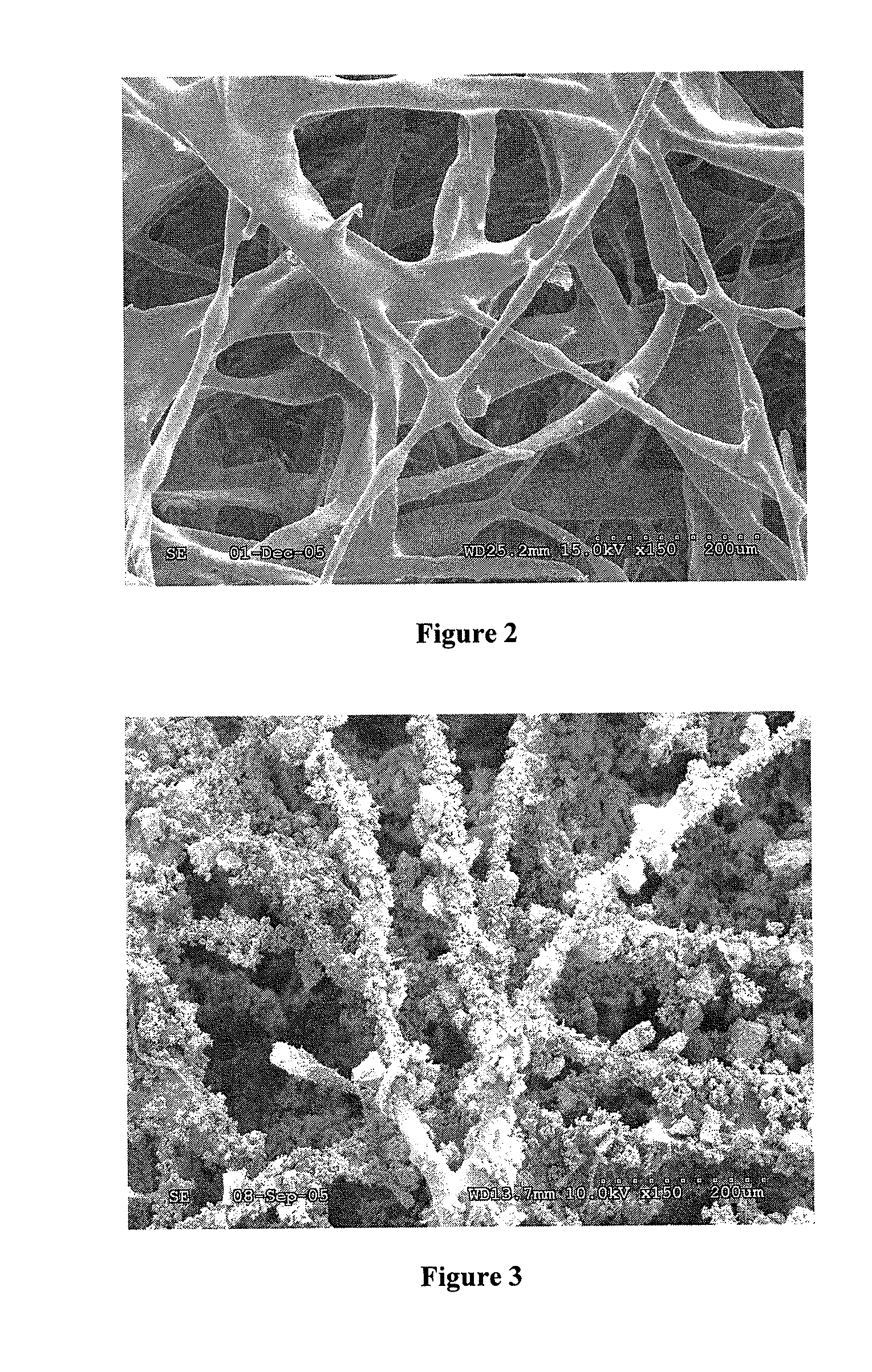Tacky allergen trap and filter medium, and method for containing allergens
a technology of allergen traps and filter media, which is applied in the field of nonwoven materials, can solve the problems of compounding, reducing the effectiveness of eradicating mite infestations outdoors such as in farms, and difficult to see without sophisticated microscopy
- Summary
- Abstract
- Description
- Claims
- Application Information
AI Technical Summary
Benefits of technology
Problems solved by technology
Method used
Image
Examples
example 1
Basic Airlaid Structures
[0153]Nonwoven substrates were produced having dimensions of 0.3556 meters by 0.3556 meters (14 inches by 14 inches). The substrates were produced using a laboratory padformer that deposits individualized fibers on a forming wire under vacuum. Airfelts having basis weights of 40 gsm (grams per square meter), 45 gsm, 50 gsm, 80 gsm, and 100 gsm, respectively, were prepared on the padformer. The raw materials used were southern softwood Kraft fluff pulp, available as FOLEY FLUFFS® from Buckeye Technologies Inc., Memphis, Tenn., and bicomponent binder fiber with a polyethylene sheath over a polyester core, available as Type T-255 with merge number 1661, which had a 2.2 dtex denier and 6-mm length, made by Trevira GmbH of Bobingen, Germany.
[0154]Table 1 shows the amount of pulp and bicomponent fiber used in the experimental substrates.
TABLE 1Composition of Laboratory Padformed SamplesSampleSampleSampleSampleSampleABCDEBasisBasisBasisBasisBasisWt.Wt.Wt.Wt.Wt.Raw M...
example 2
Airlaid Substrate
[0155]An airlaid substrate called NTL3 was prepared on a Dan-Web pilot scale airlaid manufacturing unit at Buckeye Technologies, Inc. in Memphis, Tenn. The raw materials were (1) a southern softwood Kraft fluff pulp, available as FOLEY FLUFFS® from Buckeye Technologies Inc.; (2) bicomponent binder fiber with a polyethylene sheath over a polyester core, available as Type T-255 with merge number 1663, made by Trevira GmbH of Bobingen, Fibervisions™; (3) AL-Adhesion polyolefin bicomponent fibers produced by Fibervisions; and (4) an ethylene vinyl acetate latex binder available as AIRFLEX® 192 manufactured by Air Products. (AIRFLEX® 192 usually has an opacifier and whitener, such as titanium dioxide, dispersed in the emulsion). Trevira's T-255 Merge No. 1663 bicomponent fiber has a denier of 2.2-dtex, and is 3-mm in length and a 50 / 50 ratio of polyester to polyethylene. Fibervision's™ AL-Adhesion bicomponent fibers consist of a polypropylene core and a polyethylene shea...
example 3
Padformed Samples of Allergen Barrier Material
[0158]Basic padformed structures A, B, and C, see Table 1, formed in Example 1 were each trimmed to 0.3556 meters by 0.3556 meters (14 inch by 14 inch) samples. One surface of each of substrates A and B was sprayed with a water-based adhesive available as 3M Fastbond™ Insulation Adhesive 49 produced by 3M, and the product was cured in a laboratory oven at 150° C. for 15-20 minutes.
[0159]3M Fastbond™ Insulation Adhesive 49 is an aqueous dispersion of an acrylate polymer, with a solids content of 53-57 percent and a pH of 4.1-4.5, and which is non-flammable in the wet state. Against a glass substrate the 180 peel strength is 2.8 N / 10 mm and the overlap shear is 0.37 Mpa.
[0160]The basis weights of Samples A and B with the adhesive add-on were 50 gsm. Sample C formed in Example 1 to a 50.0 gsm basis weight served as the control for this experiment. The samples were sticky to the touch. Table 3 below shows the amount of adhesive add-on to eac...
PUM
| Property | Measurement | Unit |
|---|---|---|
| diameter | aaaaa | aaaaa |
| pore size | aaaaa | aaaaa |
| accelerating voltage | aaaaa | aaaaa |
Abstract
Description
Claims
Application Information
 Login to View More
Login to View More - R&D
- Intellectual Property
- Life Sciences
- Materials
- Tech Scout
- Unparalleled Data Quality
- Higher Quality Content
- 60% Fewer Hallucinations
Browse by: Latest US Patents, China's latest patents, Technical Efficacy Thesaurus, Application Domain, Technology Topic, Popular Technical Reports.
© 2025 PatSnap. All rights reserved.Legal|Privacy policy|Modern Slavery Act Transparency Statement|Sitemap|About US| Contact US: help@patsnap.com



